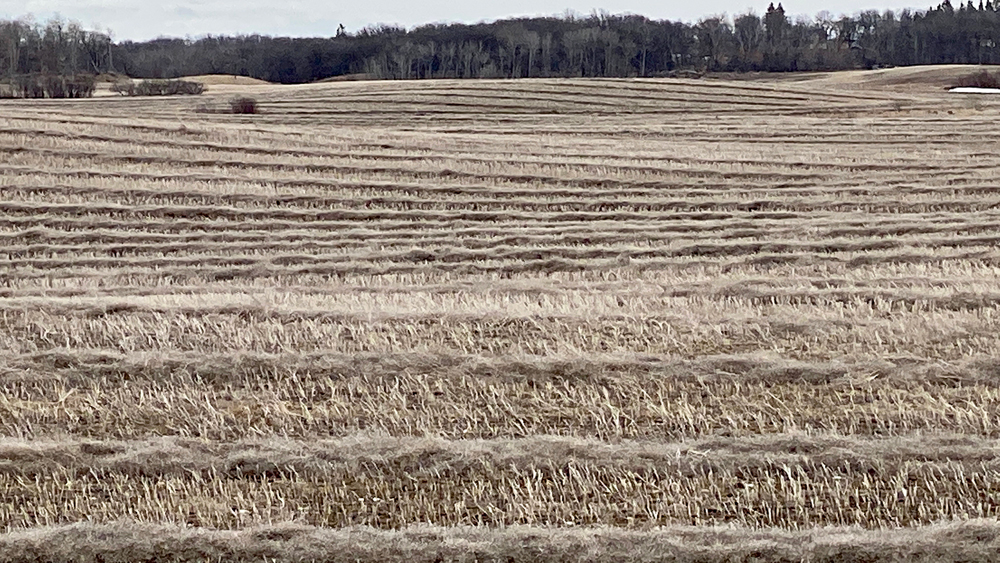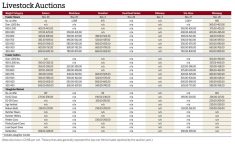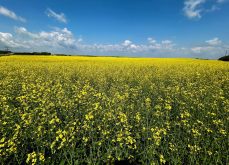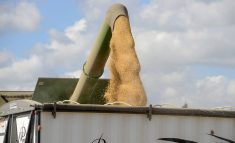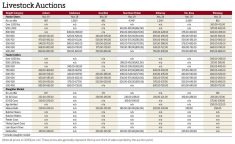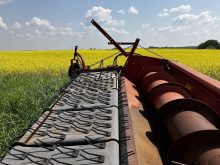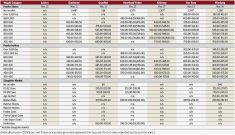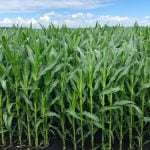After being delayed by the COVID-19 pandemic, on May 7 Statistics Canada released its report on stocks of grain and oilseeds as of March 31. However, there was a good amount of doubt in the agency’s data.
The report said total Canadian canola stocks amounted to 8.925 million tonnes, which were down 12.3 per cent from March 2019. Of the current stock estimates, 7.430 million tonnes were on the farms and 1.495 million were in the commercial pipeline. Both of those figures were also down from last year.
Read Also
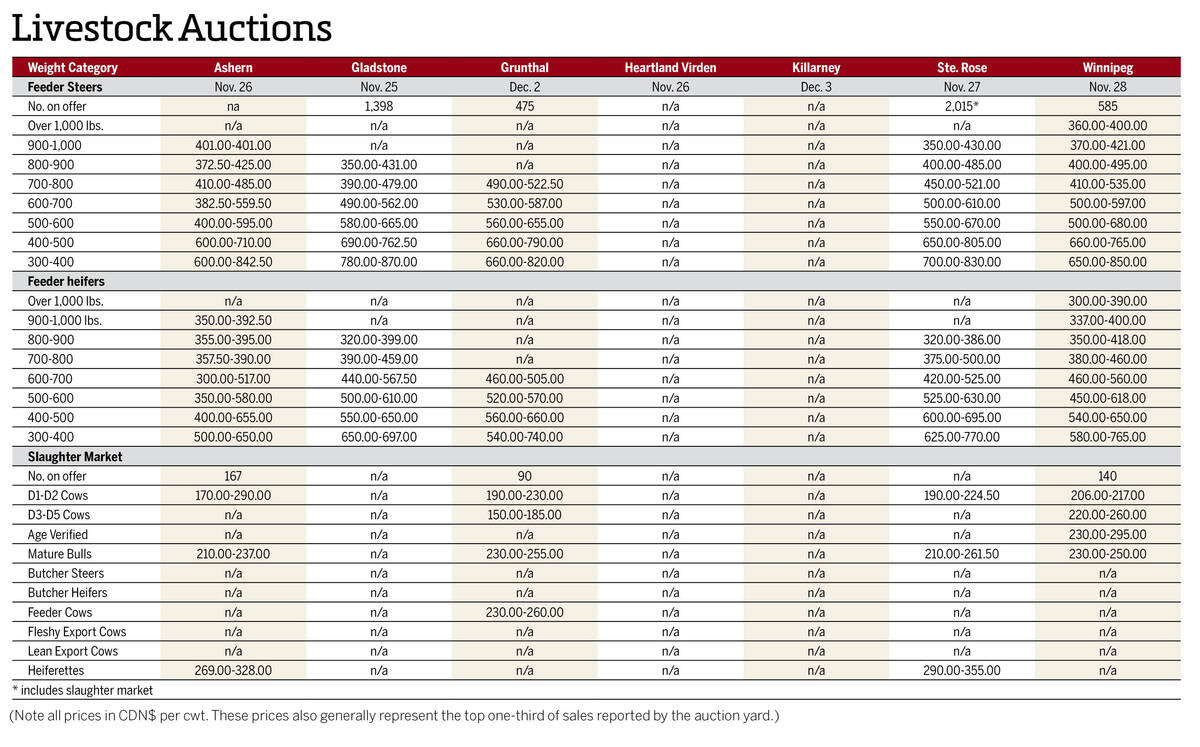
Manitoba cattle prices, Dec. 3
Cattle prices from Manitoba’s major livestock auction marts during the week Nov. 25-Dec. 2, 2025.
One trader raised an excellent point about the accuracy of the report’s numbers. He said stocks are distorted as Statistics Canada didn’t take into account the canola that was left to overwinter on the Prairies.
Together with the principal field crop areas estimates March 2020, he believes the reports won’t have much of an effect on canola prices.
That said, a much clearer picture will emerge in future reports once the overwintered canola is taken into account. Then the reports could play into leading canola up or down in the markets.
So far this spring, that canola has been surprisingly decent, particularly in Alberta. The quality has been pretty good with yields of up to 40 bushels per acre, the trader said.
On a side note, the trader said farmers were banding together in Alberta to help speed up their harvest so they can get to planting their crops.
When it comes to the other Prairie provinces, the story has not been as favourable. Persistent wet soil conditions in Manitoba have slowed the harvesting of any overwintered crops, including canola. Seeding progress too, has plodded along at well under the average pace.
In Saskatchewan, combining has been slow as well. As with its eastern neighbour, wet soil conditions have hampered the spring harvest and this year’s planting.
The same day the results of the first acreage estimates for 2020 from Statistics Canada come with an asterisk, as the COVID-19 pandemic halted data collection early. Actual seeded area is expected to see some shifts from the projections.
“As a result of the timing of the COVID-19 pandemic, these estimates were produced in March 2020 under exceptional circumstances,” said Statistics Canada in the report, while highlighting a lower-than-usual response rate. The report was originally scheduled to be released in April, but was delayed to May 7.
“At this time, intended seeded area estimates cannot reflect the full impact on the crop sector as a result of COVID-19,” said Statistics Canada, adding “over time, as seeded area estimates are revised based on new data, users will be able to see a more comprehensive view of the impacts on seeding and production.”
While revisions are likely, the projections were still largely in line with market expectations.
However, one crop that stood out was lentils, with the government agency forecasting a slight 1.9 per cent reduction in seeded area at 3.709 million acres.


